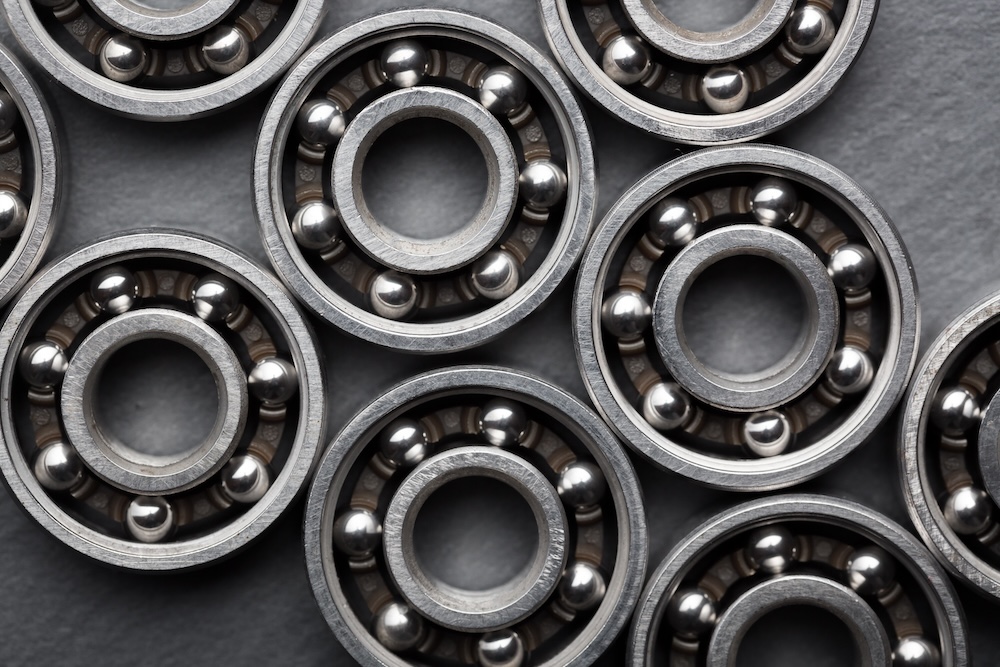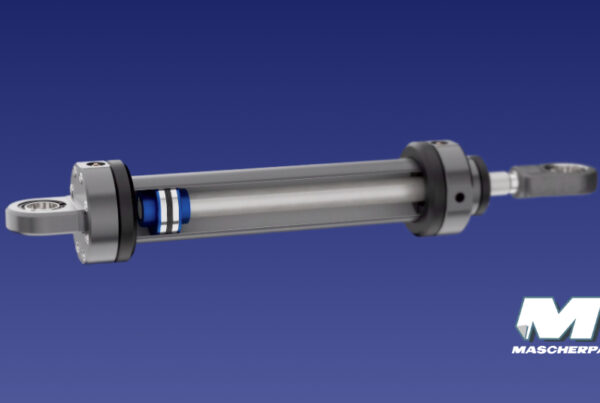Key points of the article
- Fretting is a complex form of wear that combines adhesive, abrasive, and corrosive effects, particularly affecting metal surfaces subject to oscillatory micro-movements.
- Laboratory tests with the Bruker UMT tribometer allow simulation of realistic conditions to evaluate the fretting wear resistance of lubricants and coatings.
- MOLYKOTE lubricating pastes have proven to be significantly more effective than anti-friction coatings, with reduced wear scars and greater stability in results.
- Measurement of the wear scar is confirmed as a reliable parameter for comparing the effectiveness of fretting lubricants, in the absence of detectable mass loss.
- Mascherpa offers specialized technical support to help companies select the most suitable lubricants against fretting based on specific application conditions.
In the field of mechanical design and industrial maintenance, fretting represents one of the most complex and insidious forms of wear. It occurs when two metal surfaces, subjected to a static load and oscillatory micro-movements, begin to degrade over time. This phenomenon not only involves mechanical wear but exists in a synergistic space where adhesive, abrasive, and corrosive wear act simultaneously. The consequences can be critical: from reducing component lifespan to increasing the risk of unexpected failures.
Many designers and maintenance engineers deal with fretting wear in applications where vibrations or micro-displacements are present, such as bearings, dovetail joints, seals, gears, spindles, or screws. Recognizing its signs, understanding its mechanisms, and effectively testing available lubricant solutions is now a necessity for any plant operating under dynamic conditions and with tight tolerances.
Fretting and its Implications in Mechanical Systems
In tribology, the term fretting refers to a specific form of wear or corrosion caused by repetitive relative movements of small amplitude between two contacting surfaces, usually under load. The peculiarity of this wear is that it occurs in very confined spaces, with reduced movements, and thus manifests with extremely localized characteristics, difficult to detect until the damage becomes critical.
The movement breaks the oxidative films that normally protect the metal surface, generating wear particles that, in turn, act as abrasives. This is why fretting can easily degenerate into fretting corrosion, worsening the damage and accelerating the functional degradation of the component. It’s no surprise that in sectors where precision, mechanical strength, and durability are fundamental, such as automotive, aerospace, energy, managing fretting wear is a technical priority.
How Fretting is Tested: Method and Critical Parameters
Effectively simulating fretting in the laboratory requires the combination of three fundamental parameters: small displacements, high frequency, and high load. Not all tribometers are suitable for these conditions, but the test developed by DuPont with MOLYKOTE lubricants has shown that even non-specialized instruments, if well configured, can offer repeatable and significant results.
The test system used was the Bruker UMT (Universal Mechanical Tester) with a block-on-ring module, a setup capable of reproducing realistic fretting conditions. The oscillation was 9 degrees, with frequencies of 30 Hz and 50 Hz, while the applied load was 100 N (153 MPa). The test duration was kept constant at two hours. Although the system did not include temperature control, the combination of parameters allowed compliance with the requirements of the reference standard ASTM D1470.

Test Results: Comparison between Coatings and Pastes
The test was applied to both commercial anti-friction coatings and fretting lubricant pastes, to cover the entire spectrum of solutions available on the market.
In tests without lubricant, early failure often occurred, i.e., early interruptions caused by force peaks that exceeded the maximum friction coefficient of 0.5. When the tests were completed, the wear scar on the ring exceeded 6 mm, measured with a micrometer.
With anti-friction coatings, applied with a load of 100 N, frequency of 50 Hz, and oscillation of 9°, the average size of the scars remained between 5.2 mm and 5.5 mm. Compared to the absence of lubrication, the reduction was minimal, with often inconsistent results and new early interruptions. This behavior, typical of high-friction systems, is not surprising: the coating, in these cases, does not guarantee sufficient resistance to fretting wear.
MOLYKOTE Paste 1, a specific lubricating paste for applications subject to fretting, stood out at superior performance levels. The product was tested 10 times under the same conditions (50 Hz, 100 N, 9° oscillation, 2 hours), showing high repeatability.
The scars on the block measured at the top, center, and bottom provided values between 1.32 mm and 1.77 mm, with a standard deviation of just 0.14 mm. The scar on the ring, measured using the same methodology, also showed average values between 3.81 mm and 5.96 mm, with a standard deviation of 0.66 mm. A second paste product, called Paste 2, showed inferior results: wider scars, greater variability, and a higher incidence of early failures. However, even in this case, the performance was better than the coatings.
Evaluating Effectiveness: Scar vs. Mass Loss
One of the challenges in fretting testing is the inability to detect significant mass loss with a four-decimal balance. For this reason, measuring the wear scar has become the main parameter for evaluating the effectiveness of fretting lubricants.
The relationship is direct: the larger the scar, the lower the effectiveness of the lubricant. The test allowed establishing a clear hierarchy among the products, demonstrating how the choice of lubricant decisively influences performance against fretting wear.
Conclusion
Fretting is one of the main causes of failure in systems subject to micro-movements and vibrations. The tests carried out demonstrate that not all lubricants can guarantee the same protection: while anti-friction coatings provide inconsistent results, specific MOLYKOTE pastes offer high, repeatable performance capable of significantly reducing wear scars.
Mascherpa makes available its technical know-how and the complete range of MOLYKOTE lubricants to support technicians, engineers, and maintenance personnel in choosing the most suitable product for their needs. Whether it’s laboratory testing, application support, or technical consultation, our team is available to help you identify the most effective solutions against fretting.
Contact us to receive personalized technical support or to request a consultation on fretting lubricants for your plant or critical application.



